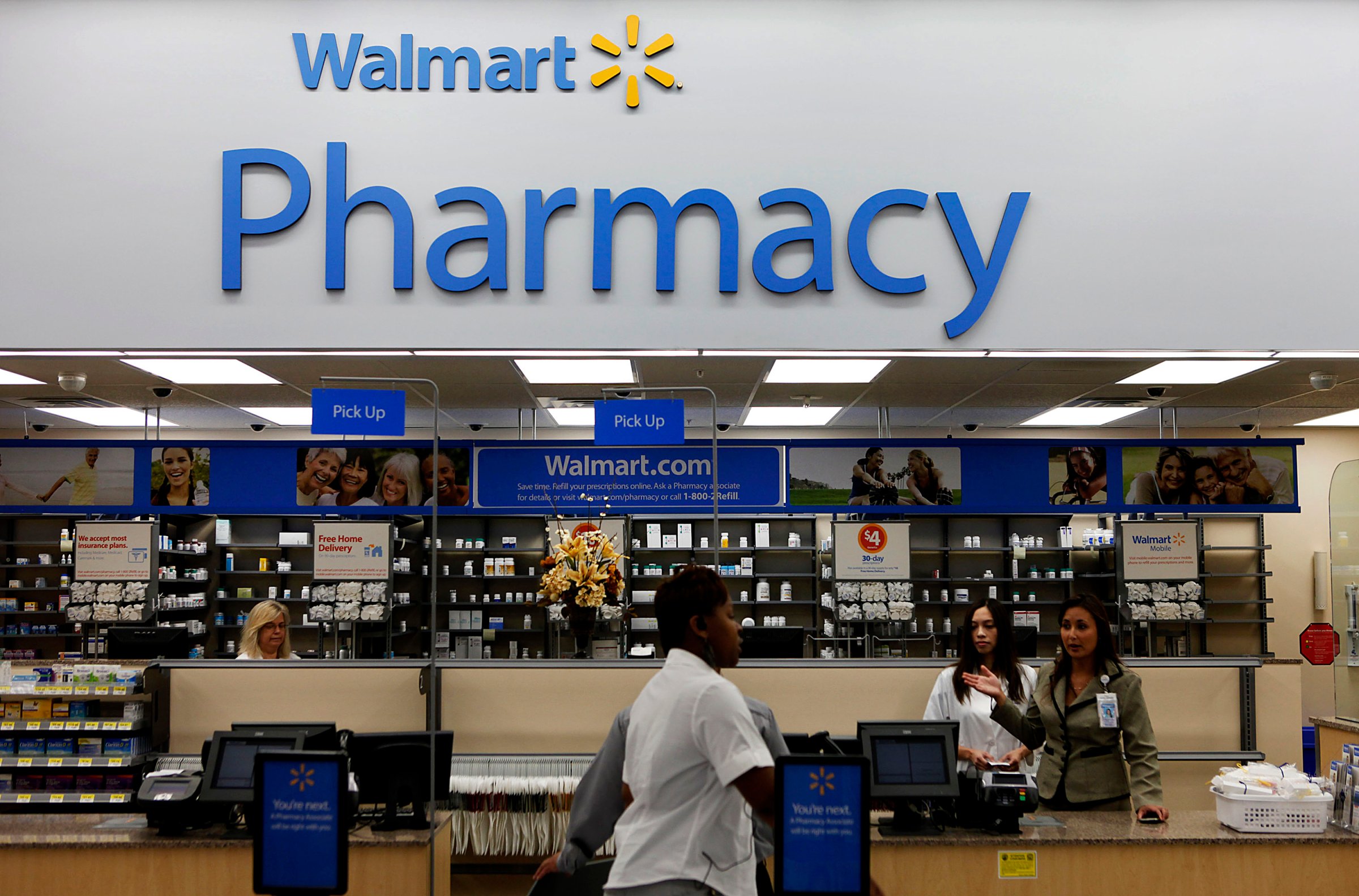
Walmart Inc. will offer its own brand of analog insulin for people with diabetes, an effort to boost its pharmacy business and counter Amazon.com Inc.’s recent push to sell more medications.
The world’s largest retailer will begin selling ReliOn NovoLog this week in its U.S. pharmacies with a prescription, Walmart said in a statement Tuesday. The medicine will cost between 58% and 75% less than the current cash price of branded insulin products for uninsured patients, Walmart said.
More than 3 million Walmart customers are diabetic, and the retailer already offers human insulin to them for about $25. But that type is inferior to analog insulin, a man-made variety that’s designed to better mimic the body’s own blood-sugar production and regulation. While widely considered the preferred option, analog insulin is expensive, prompting pleas from patients and Congressional investigations to lower the cost of the lifesaving drug.
“Diabetes is one of the most rapidly growing diseases in the country,” Cheryl Pegus, executive vice president and head of Walmart’s health and wellness business, said on a conference call. “We know from our customers that cost is a major factor in how you manage health care.”
The medicine is being manufactured by drugmaker Novo Nordisk A/S as part of a partnership than took 2 1/2 years to finalize. It can be used by those with Type 1 or Type 2 diabetes.
Walmart’s insulin launch comes 15 years after it disrupted drugmakers and pharmacy chains by introducing a range of generic drugs for common ailments like allergies and high cholesterol, with the treatments costing just $4 per prescription. The retailer expanded the generic offering in 2008, claiming then that it had saved consumers more than $1 billion.
Amazon’s Push
More recently, Amazon has moved aggressively into the $465 billion U.S. prescription-drug market by opening an online pharmacy in November and by offering six-month prescriptions starting at $6 earlier this month.
Price is a big barrier for diabetics who must take insulin to manage glucose levels and prevent complications. Approximately 34 million people have diabetes in the U.S., according to the American Diabetes Association, and 1.5 million Americans get diagnosed with the disease each year. Walmart’s product will cost $72.88 if administered through vials and $85.88 for a FlexPen version. It’s available in pharmacies inside Walmart stores this week and will be available in Sam’s Club warehouse locations in mid-July.
The move could be “a really big deal” for people with diabetes, said Dawn Davis, an associate professor and endocrinologist at the University of Wisconsin at Madison. Walmart’s $25 insulin has provided a lifeline for some patients, particularly those who are uninsured, she said. Introducing an analog version will give people a less expensive way to access modern insulin. However, patients using Walmart’s brands will likely still need to use the older type since most people need both a rapid-acting and a longer-action version, she said.
A Walmart representative said that “treatments vary by patient and provider.”
Brand-name insulin under Novo Nordisk’s NovoLog and Eli Lilly & Co.’s Humalog labels can run more than $300 a vial, according to a 2020 review of cash prices from GoodRx Holdings Inc., a company that offers coupons and publishes research on prescription drugs. Novo and Lilly, the top insulin manufacturers, have introduced generic versions in recent years. These typically sell for less than half of the branded formulations, according to GoodRx.
The amount of insulin that the average person with diabetes needs can vary widely, Davis said. Even if a person requires only five vials a month, the cost for the rapid-acting insulin alone would total $375. Patients also need all the other supplies like glucose test strips and needles.
Walmart’s Pharmacies
Walmart opened its first pharmacy in 1978, and drug sales make up the bulk of its health and wellness business. In 2020, it had 4.7% of U.S. prescription revenue, behind CVS Health Corp. and Walgreens Boots Alliance Inc., according to the Drug Channels Institute.
Over the past two years, the company has also opened 20 low-priced medical clinics in states like Georgia and Illinois in an effort to grab a bigger slice of the nation’s $3.6 trillion in health spending. The idea is to harness its greatest asset: the 150 million people coming through Walmart’s 4,743 U.S. stores each week. The chain also acquired MeMD, a telehealth company, in a deal that Pegus said closed Monday.
Even so, the company’s push into health care has been hobbled by a revolving door of executives, each with different approaches. Pegus, who joined in December, is the sixth person to run the business since 2014.
Walmart’s health and wellness unit increased sales more than 5% in the last fiscal year to $38.5 billion, but its growth rate lagged behind those of its grocery and general-merchandise departments, which combined, account for the majority of its U.S. revenue.
More Must-Reads from TIME
- Cybersecurity Experts Are Sounding the Alarm on DOGE
- Meet the 2025 Women of the Year
- The Harsh Truth About Disability Inclusion
- Why Do More Young Adults Have Cancer?
- Colman Domingo Leads With Radical Love
- How to Get Better at Doing Things Alone
- Michelle Zauner Stares Down the Darkness
Contact us at letters@time.com